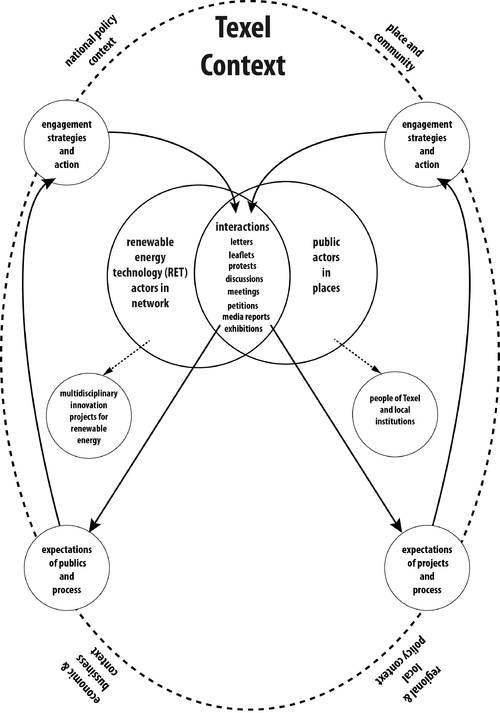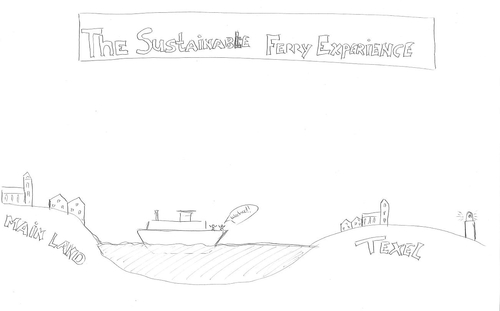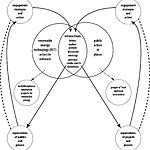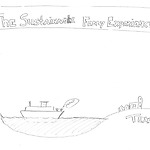“Yes we can do it and it’s fun! “
A sustainable, dynamic, hybrid, modular, super cool, autarkic pavilion that suits every context and triggers (inter)action by experience of innovation was presented on the lecture on 25th of November by Gertjan de Werk (Werk, G. 2014). This project shows possibilities for sustainable development with the implementation of people. It is interesting how much we can do with people’s activities. Producing renewable energy can be a part of our daily routine, our daily activities, so creating an autonomous life cycle. According to the laws of energy, energy can’t be produced from zero and never reaches zero, it can only be transformed from one form to another. Imagine that all this energy we use to walk, dance, cycling, playing sports etc could be transformed to electricity or other to supply back our daily needs. The success of this brilliant idea relies on three basic aspects; the involvement of market, huge numbers of initiatives of people and of course enthusiasm.
Strategic niche management theory is potentially helpful here as it highlights the important roles played by ‘intermediary actors’ in consolidating, growing and diffusing novel innovations. In the article “Grassroots innovations in community energy: The role of intermediaries in niche development” the first in-depth analysis of intermediary work in the UK community energy sector is presented and the outcome of the analysis finds intermediaries adopting a variety of methods for trying and diffusing generic lessons about context specificprojects (Hargreaves, T., et al, 2013). But in reality, when trying to coordinate support for local projects that exist amidst very differentsocial and political circumstances is challenging (Hargreaves, T., et al, 2013). According to the article (Hargreaves, T., et al, 2013), this is exacerbated by the challenges of building coherent institutional infrastructure for a sector where aims and approaches diverge, and whereunderlying resources are uncertain and inconsistent. Applications of relatively simple, growth-orientedapproaches like strategic niche management to grassroots innovations need to be reformulated to betterrecognize their diverse and conflicted realities on the ground. Therefore, it is important to recognise the emerging conflicts between actors, institutions and sustainable projects in Texel.
There is a growing body of research on public beliefs, reactions and responses to large-scale renewable energy projects of various forms, often focused on case studies of controversy and local conflict (Walker, G., 2011). The profile of available cases has expanded significantly, covering a diversity of locations and contexts around the world and a wide range of types of renewable energy technology and modes of project development. However, as stated in (Walker, G., 2011), the previous models and frameworks which contribute to our understanding of the patterns of public response to renewable energy projects, still do not present a satisfactory representation of the processes, dynamics and interactions involved. A framework which has a number of distinctive characteristics; such as symmetry, anticipations and expectations, dynamics, and contextuality, can be a solution according to the athurs (Walker, G., 2011)). First, a symmetrical framework refers to an equal attention to both the public and to the actors who are involved in promoting technology development and engaging with publics in various ways. Second, it seeks to capture the anticipations and expectations that are involved in shaping how people and organizations respond and strategically seek to engage or not engage with others. Third, it is dynamic in recognizing that, over tie, anticipations and expectations evolve and are both the details of proposed projects and currents of local debates can shift considerably. Fourth, it recognizes the contextuality involved, and the importance of situation in both broad policy and economic landscapes in the characteristics of local places, communities, cultures and politics. In combination, this framework provides an effective and multifaceted representation of the processes involved in public engagement with large-scale renewable energy projects and how these can and do evolve over time (Walker, G., 2011)).
This framework could be used for the project for Texel and opens up new possibilities to approach a new emerging sustainable mobility system. The interactions between the actors are vital to the creation of a successful new system for Texel. If the new mobility project fits in the cultural context, then people can accept it and use it, while the limitations due to certain policies can release the development from restrictions which do not allow for a sustainable development. What it is common in approach of presence and this framework is that actors (people) and place (local context) are key factors for analysis and development.
fig.1:framework
After the lecture of Gertjan, we did a mini workshop.
Mini workshop
After the lecture of Gertjan de Werk we did a mini workshop. In our groups, we had to come up with an idea of an activity to enthuse the Texelaars and the tourists coming to the island with the topic of sustainability. One of the first thoughts we had was: “we are all in the same boat: actually, the world is our boat and we are floating in space”. It is of course important to keep this boat in proper conditions. Unfortunately we are not taking care of our boat as we should.
From this boat metaphor, it was a small step to the ferry. Actually almost anyone entering or leaving the island of Texel, has to come by ferry. Why not teaching all these people on the Ferry during their trip, how important it is to take care of the boat and keep it running? Or do we want our Ferry to stop working and sink? With the lecture of Gertjan in the back of our minds, we immediately concluded that above all, this ‘Sustainable Ferry Experience’ should be a fun experience. In this half an hour, the people should get acquainted with sustainability in a fun way. Therefore, it will be organized as an immense fair with music, performances, interactive shows and free drinks. After this life changing half an hour, people will leave the boat reborn. They will start questioning everyday things, their own habits or the behaviour of others. And this tiny spark can grow into a huge fire when it can touch people in such a way, that they do make changes in their behavior. That is the basic.
References:
Lecture and literature of 3rd meeting:
(1) Werk, G. (2014). Creating Context for Innovation and Inspiration, Lecture of 3rd ESD meeting, TU-Delft
(2) Hargreaves, T., Hielscher, S., Seyfang,G., Smith, A., (2013).Grassroots innovations in community energy: The role of intermediaries in niche development , Global Environmental Change: Human and Policy Dimensions, Proceedings
(3) Walker, G., (2011). Renewable Energy and the Public, Chapter 1: Symmetries, Expectations, Dynamics and Contexts: A Framework for Understanding Public Engagement with Renewable Energy Projects



